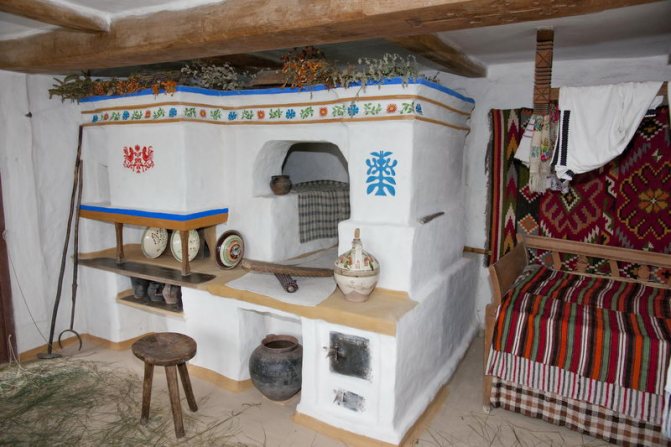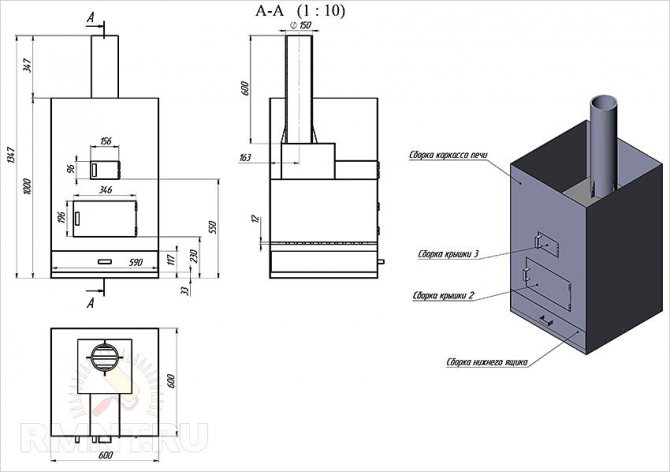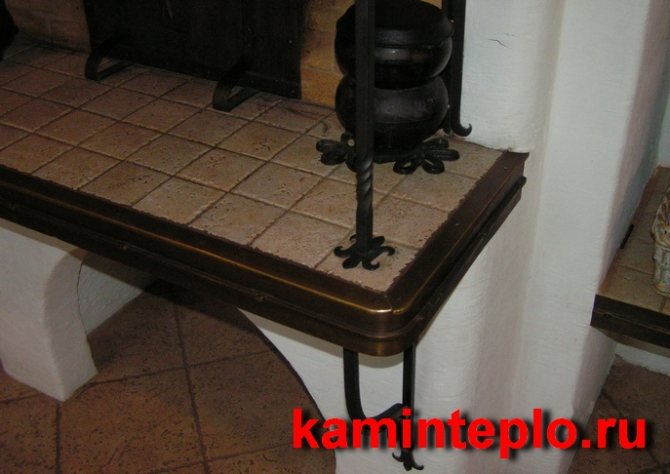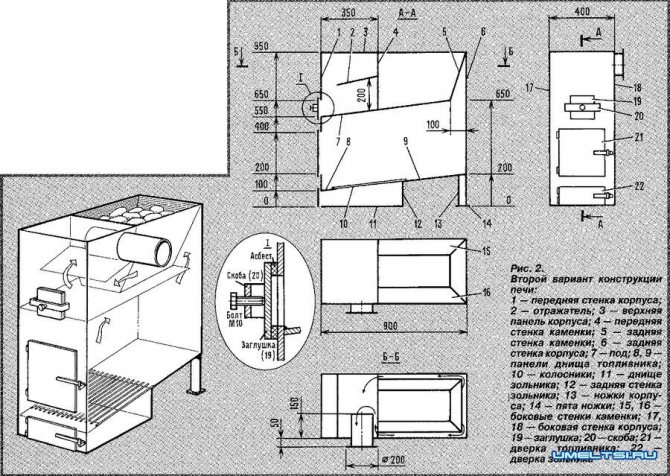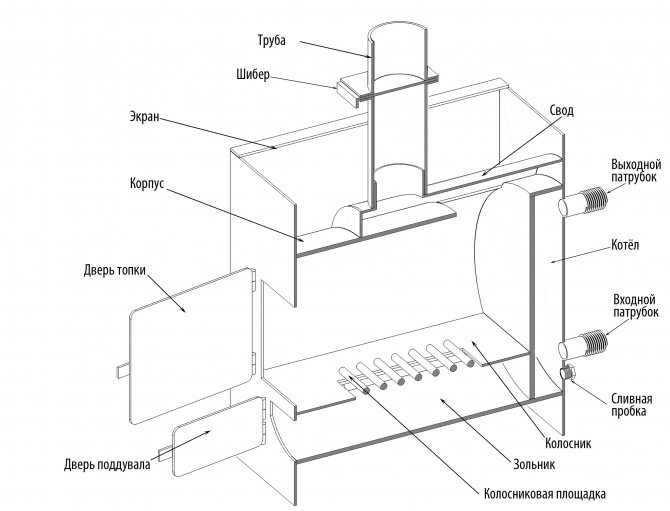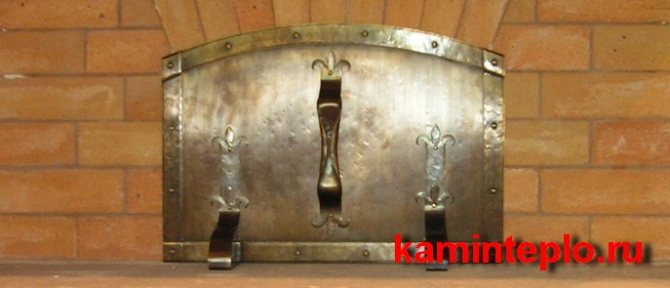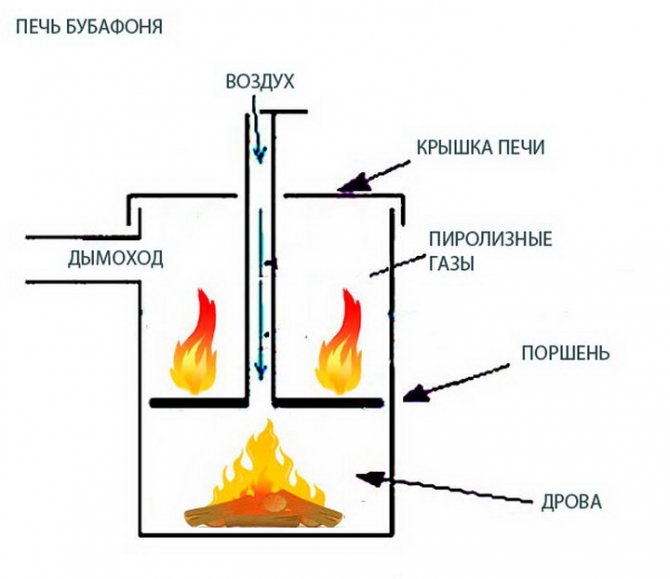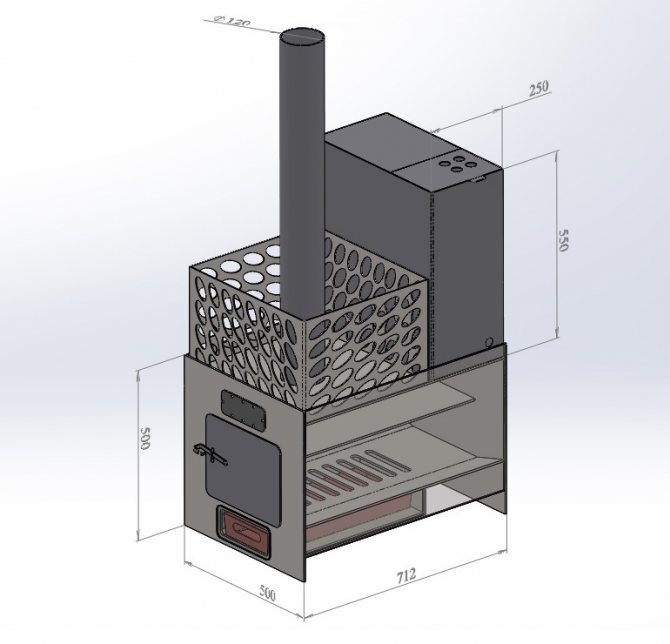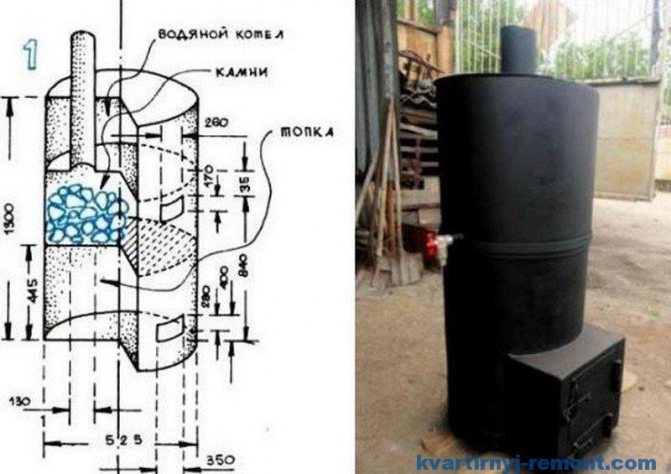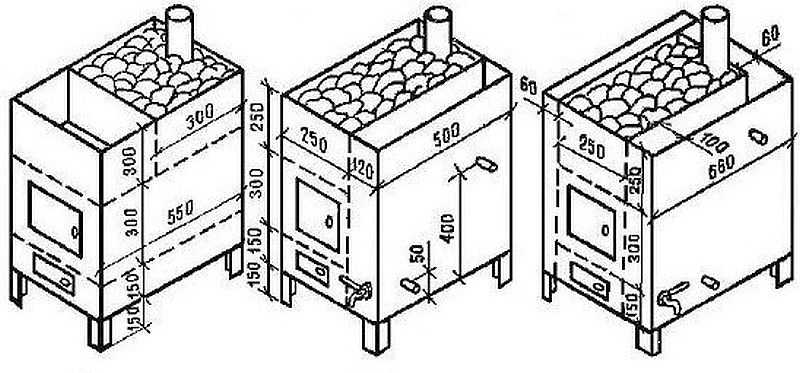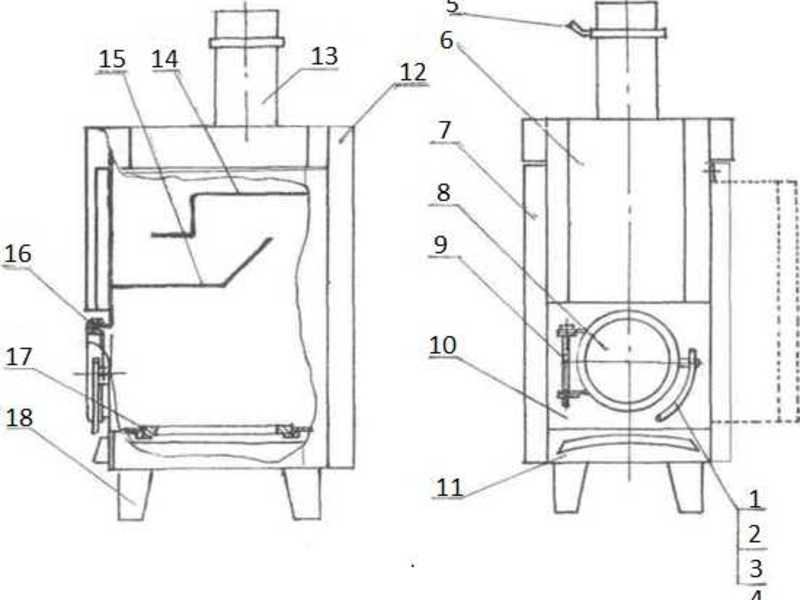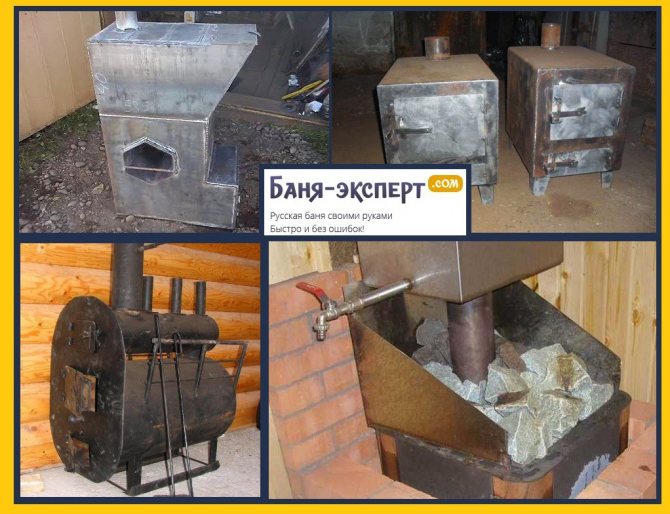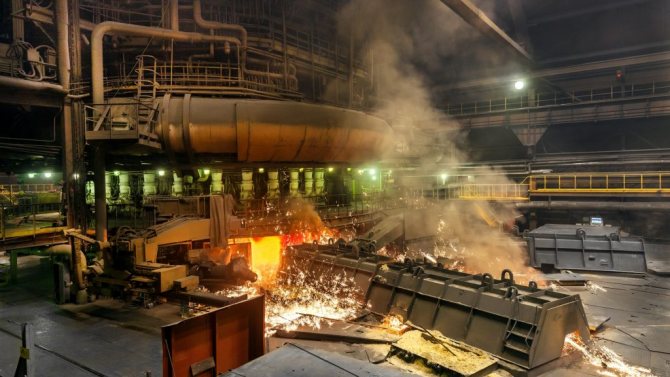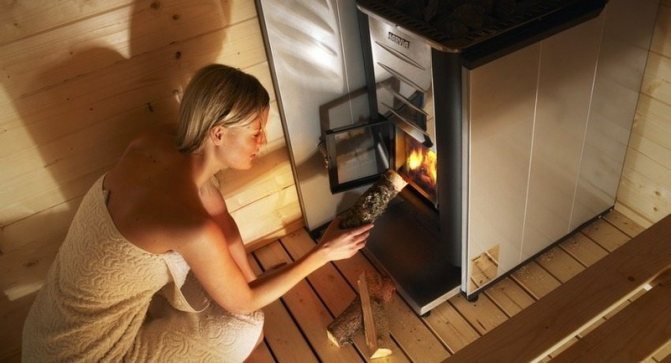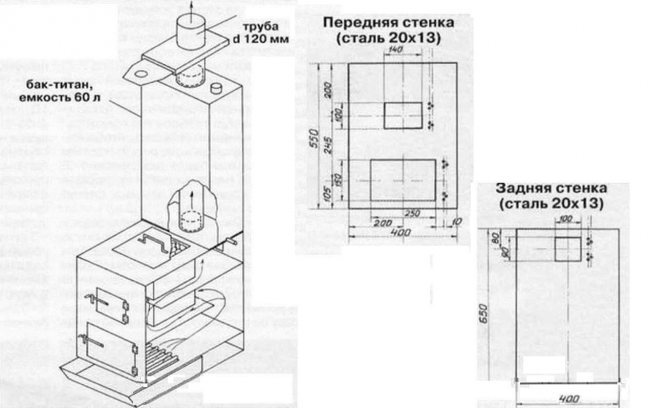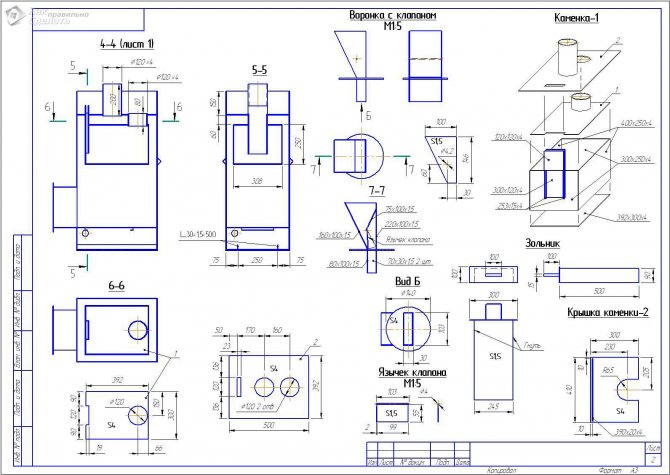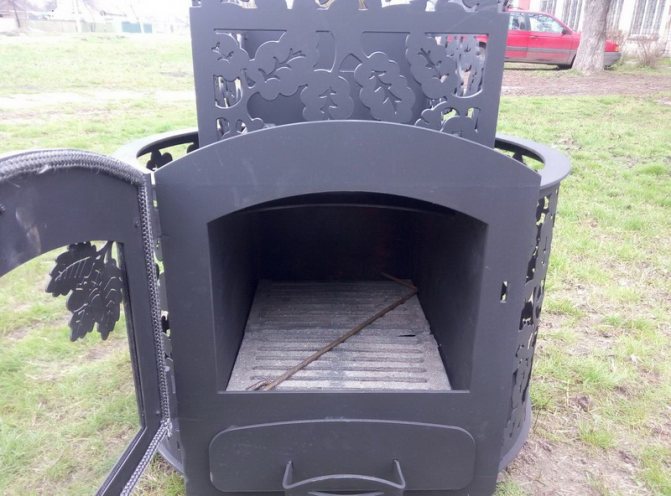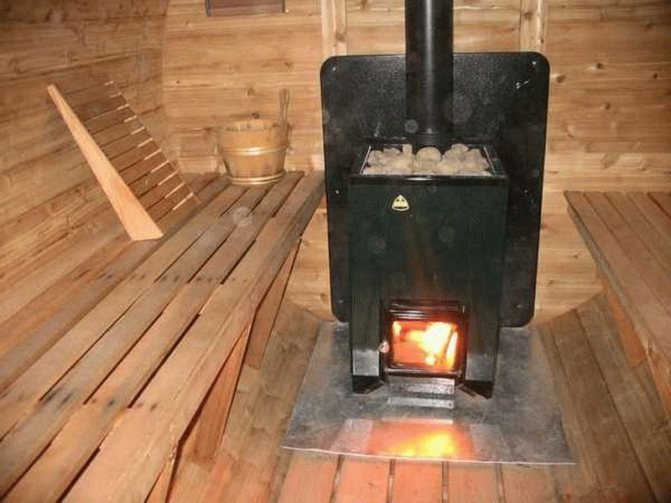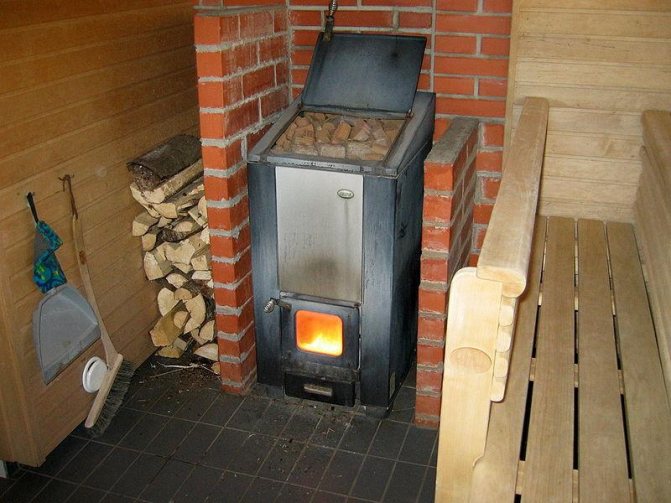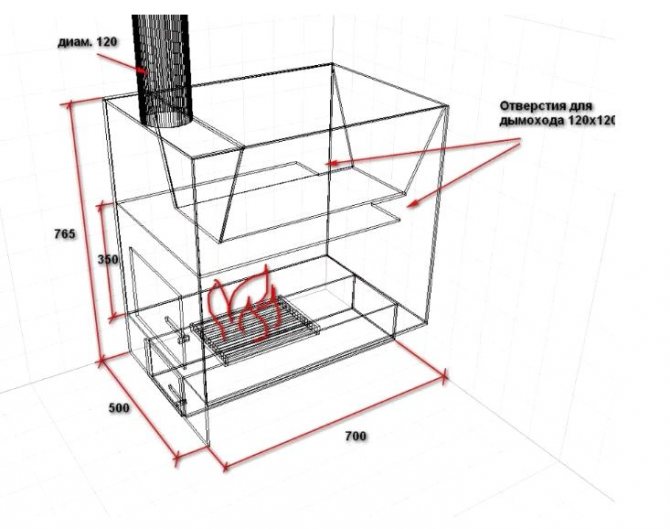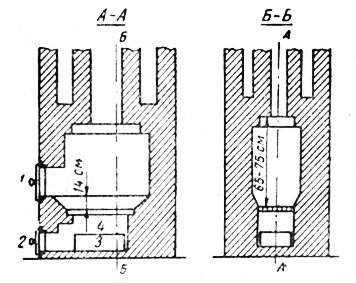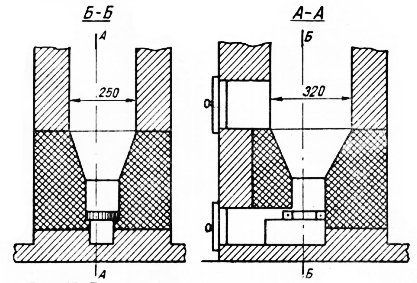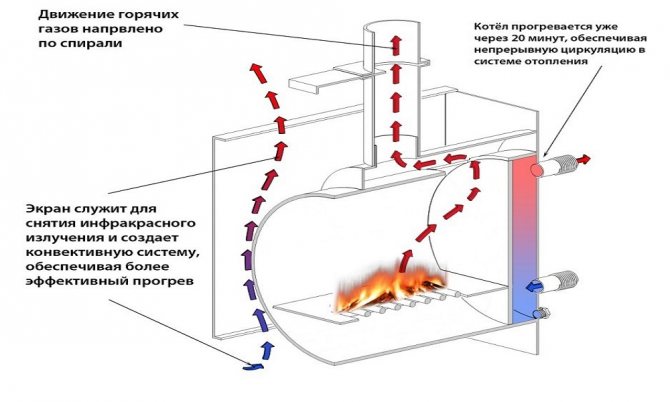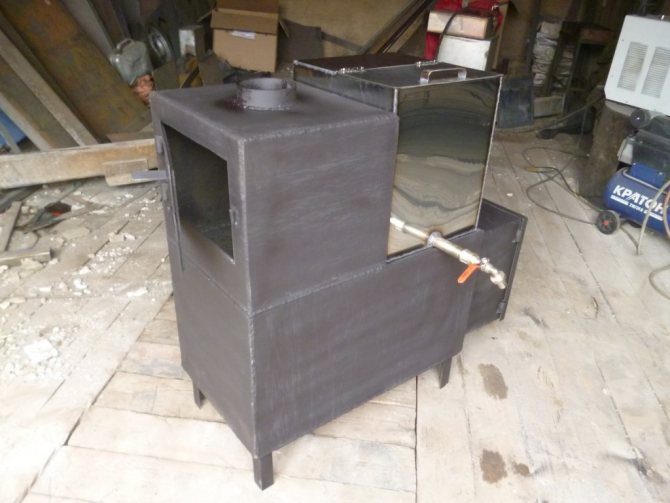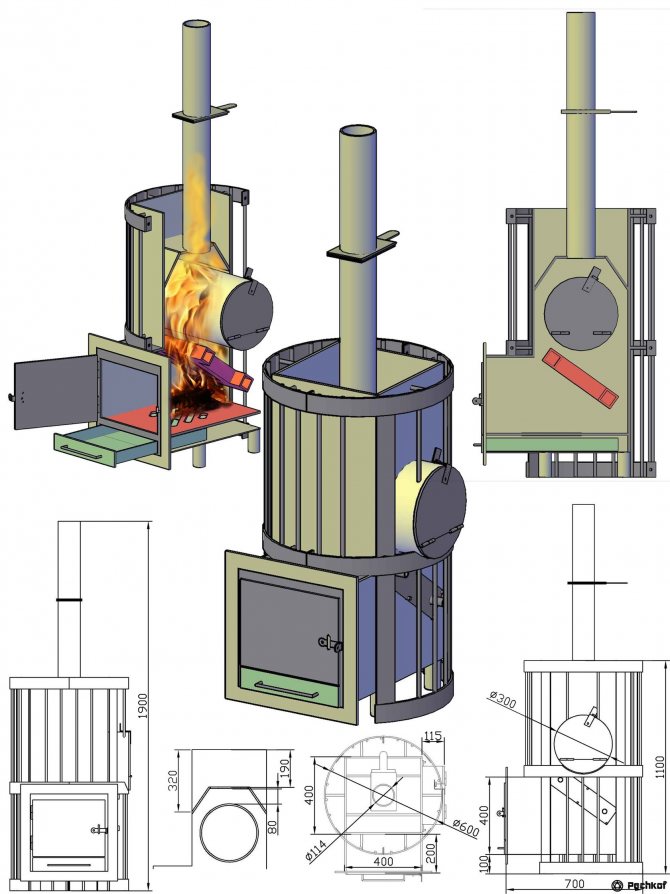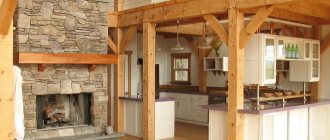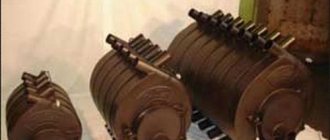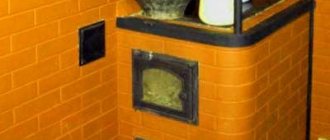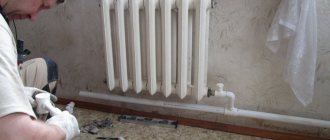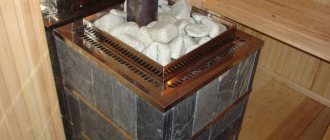DISTINCTIVE FEATURES
The main load in this the structure carries a fireplace stove
(hereinafter for brevity - oven). It provides for the possibility of transit of hot flue gases for heating the second floor, both due to the operation of the furnace and due to flooding. Moreover, the flue gases from the flooding follow in transit, practically not taking part in the heating of the first floor. This decision is due to the following considerations:
EVERYTHING YOU NEED FOR THIS ARTICLE IS HERE >>>
- - the inclusion of smoke channels, flooding into the smoke circulation system of the first floor will require an increase in the mass of the entire structure, which is undesirable;
- - the presence of underflooding is caused not by a lack of heat from the main structure of the oven, but by considerations of convenience - the ability to cook food;
- - the chimney from the underflooding adjoins the left circulation channel of the furnace and merges with it, without negatively affecting its operation.
It is possible to link the furnace with underflooding using structurally defining sections (KOS). This method does not require detailed ordering in most cases, but it allows you to compactly link all the necessary elements - blowers, furnaces, chimneys.
For this design, such KOS we choose the 3rd, 14th, 20th rows (Fig. 1, 2), as well as vertical sections A-A and B-B (Fig. 3, 4).
The correct kindling of the stove
After familiarizing yourself with the design features, you should figure out how to melt a Russian stove correctly. The rate at which the fuel burns is largely dependent on the delta between the temperature outside the building and inside it. If this value is small, then the traction force will be weak and it will be more difficult to drown.
The draft promotes the flow of oxygen to the hearth and the extraction of smoke from it. To make it easier to light the stove, the walls of the pipe are warmed by burning flammable materials - paper, birch bark. Next, you should put dry firewood in the crucible and firebox and kindle them.
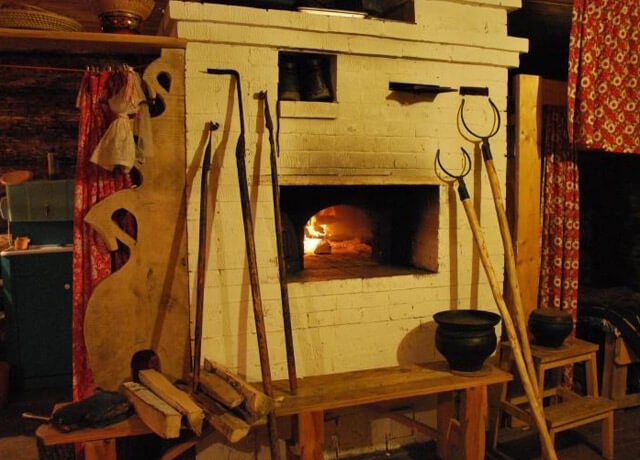
If there is no urgent need to heat the unit, it is advisable to wait for the temperature regime to change. The fact is that, regardless of the time of year, it always gets colder in the evening and the traction force should be restored.
True, even after changing the temperature outside, sometimes the stove still cannot be melted and then you need to stop trying to light it up until the reason for what is happening is clarified. Possible, chimney cleaning required. Experienced stove-makers advise to heat the unit gradually, especially if it is rarely used. Since it has rather thick walls, with sharp heating to high parameters, cracks can go along them.
FEATURES OF OPERATION OF THE FIREPLACE OVEN
Before opening the furnace door when placing firewood in the stove in heating mode, it is necessary to switch the mode of its operation to the fireplace one. To do this, you must fully open the valve No. 1. Otherwise, smoke may be ejected through the open door.
Passing flue gases in transit to the second floor to heat it, the oven doors must be kept closed so that the gases have the highest temperature.
If it is necessary to use a heating stove for cooking in a warm season or when using the oven in open fireplace mode (when it is not required to heat the premises of the first or second floor), flue gases must be passed in transit, bypassing all smoke circulation systems, that is, with all valves open on both floors. (On the ground floor there are valves # 1 and 2.)
Reference by topic: Do-it-yourself fireplace stove - photo of alterations from an open fireplace
Design features of Russian stoves
They consist of three main elements:
- firebox;
- chimney;
- pipes.
The combustion compartment, an obligatory part of any unit, is a compartment designed for solid fuels. A blower is installed under the firebox, which provides the supply of oxygen necessary to maintain the combustion process, and in addition, ash from the burnt wood accumulates in it.
The purpose of the chimney is to remove smoke and excess heat energy collected in the firebox of the Russian stove. During its construction, several turns in a zigzag shape are laid out inside in order to heat one of the walls of the house. The surface inside the chimney should be smooth so that it is less covered with soot and dust.
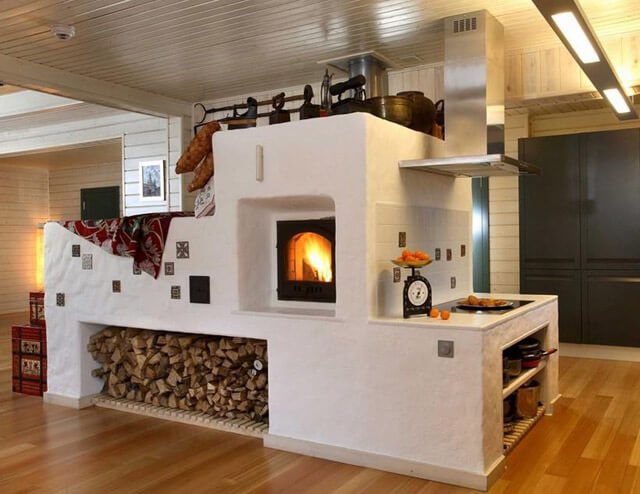

With the help of a pipe, smoke is removed to the outside to the atmosphere. It should be properly insulated, as it heats up to a high temperature.
Also, at the very bottom of the Russian stove, there is a baking oven or baking oven - a special compartment for storing a stock of firewood. The pad was often used for crockery. The six is intended for the convenience of cooking.
Stoves, equipped in the unit, improve heat transfer and dry fruit blanks. The front part of the structure is called cheeks, and firewood is laid through the stove mouth. The crucible is the place where fuel is burned. The smoke is led to the chimney by the highlighter. The overlap is used as a warm stove bench.
STOVE-FIREPLACE - ORDERS


ORDERS OF A FIREPLACE OVEN WITH A SINK (ROWS 1-15).
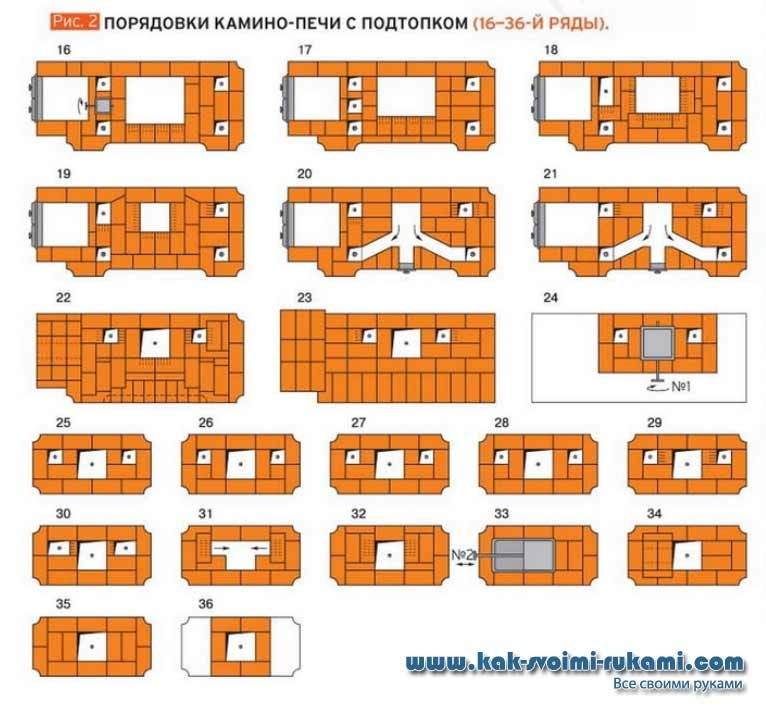

ORDERS OF A FIREPLACE OVEN WITH A SINK (ROWS 16-36).
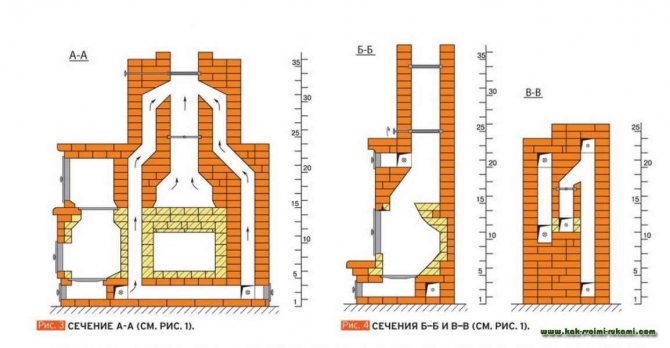

Counterflow heating stove
In such ovens, air enters from below. After heating in the combustion chamber, it rises along the lifting channel, where it is cooled and descends along a pair of lowering channels. This convective system is able to provide high efficiency due to high-quality heat extraction into the room. The body of such a heating furnace heats up quickly and evenly. Outside, the wood-burning stove is finished with facing brick or stone, which gives an aesthetic appearance to the structure, allows you to keep warm.
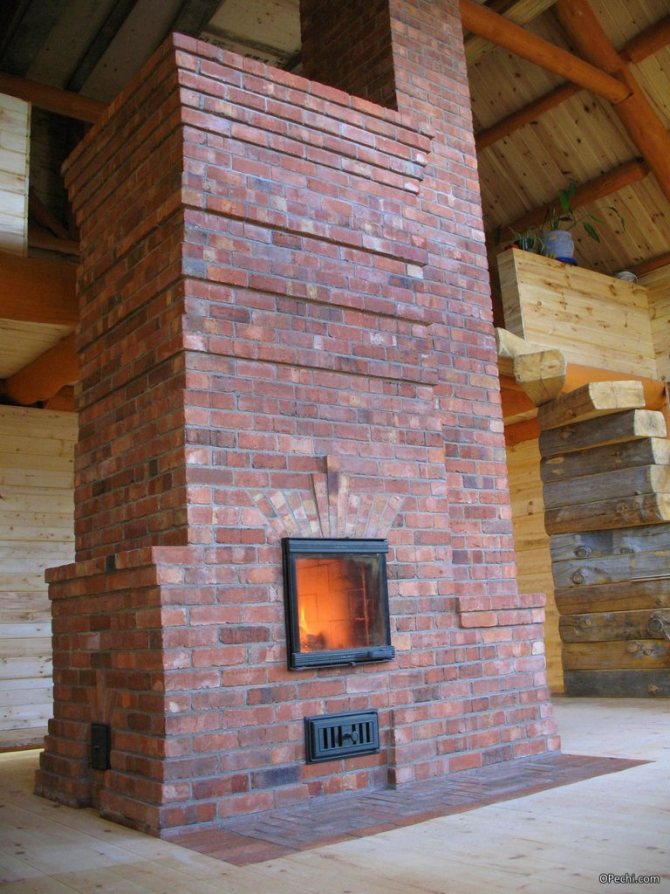

Counterflow oven
The Finnish counterflow wood-fired heating stove removes smoke through the main pipe, while there are additional ducts. Thanks to this, a hob is installed on the oven. There is one drawback of countercurrent furnaces - a complex design. The construction of such a furnace can only be done by an experienced craftsman.
DO-HAND FIREPLACE - PHOTO
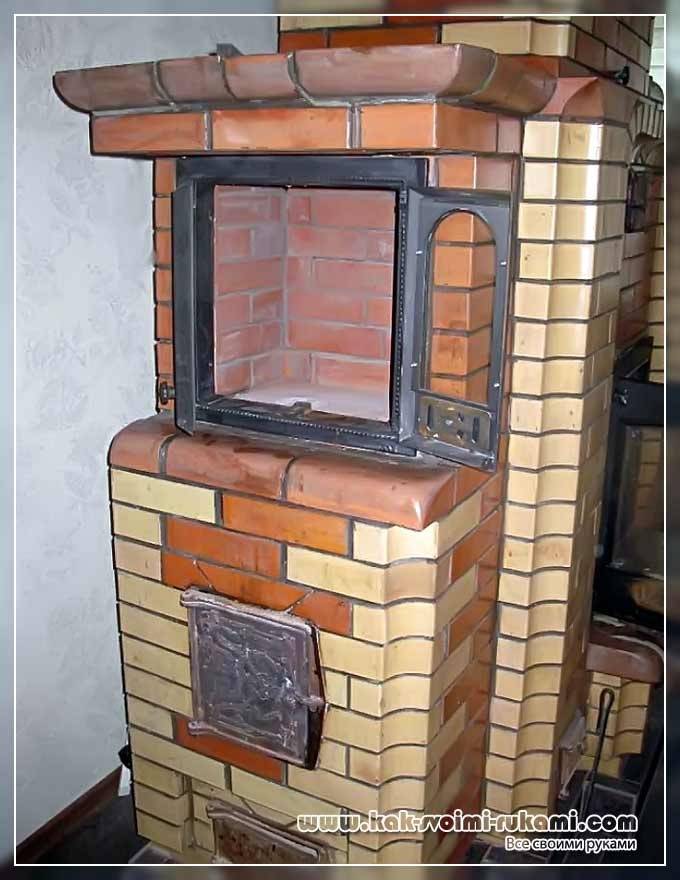

© Author: A. Smirnov Poryadovki E. Ozerina
TOOL FOR MASTERS AND MASTERS, AND HOUSEHOLD GOODS VERY CHEAP. FREE SHIPPING. THERE ARE REVIEWS.
Below are other entries on the topic "How to do it yourself - a householder!"
- Do-it-yourself fireplace-stove - photo and diagram HOW TO FOLD THE FIREPLACE-OVEN WITH YOUR HANDS IN ...
- DIY mini oven for a cauldron (+ PHOTO) MINI OVEN WITH BLOWING FOR A CAZAN RECENTLY ...
- Do-it-yourself rustic stove - photo and diagram HOW TO BUILD A RURAL FURNACE - ...
- Combined stove - both fireplace and heating: DIY masonry Double-circuit heating stove and fireplace ...
- Do-it-yourself fireplace stove - photo of alteration from an open fireplace How to remake a fireplace (with an open ...
- Do-it-yourself stove for a cauldron - photo A stove for a cauldron from a gas ...
- A fireplace stove with a closed hearth - orders and photos of masonry How to fold a fireplace stove with your own hands ...
Subscribe to updates in our groups and share.
Let's be friends!
With your own hands ›Stoves, fireplaces, barbecue› Do-it-yourself fireplace stove with flooding - photos and orders
Direct-flow heating furnace
This is the easiest to maintain and cheapest to install heating stove on wood or other solid fuel. The smoke from such a furnace rises vertically up the chimney, which is why it is called direct-flow. It is such a device that the well-known wood-burning "Russian stove" has. This simple design has more than merit. A significant part of the heat is immediately released through the chimney together with the hot combustion products, which reduces the efficiency of such stoves.
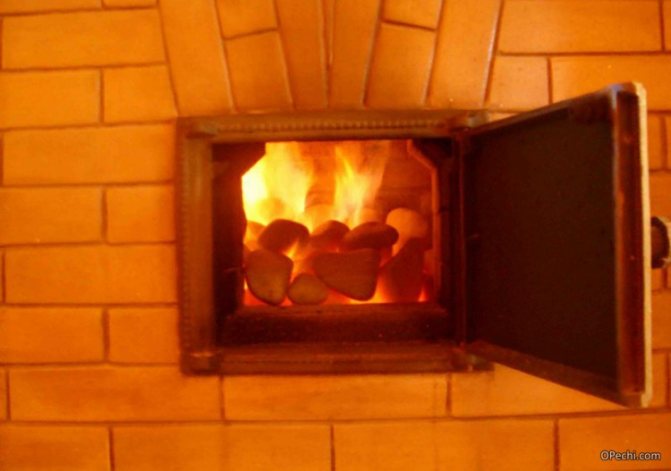

Continuous furnaces
Accordingly, it takes a lot of time to warm up the room with a direct-flow furnace. Heating takes place in stages: first, the walls of the furnace are heated, then the air in the room. A hob can be built into such an oven, which makes it possible to cook food on them.
Furnace parts
To get acquainted with the individual parts (elements) and details of the room heating furnace, consider Fig. 37.
| ovens. " /> |
| Fig. 37. The main parts and details of the oven. |
The stove consists of a firebox 11, where the fuel is placed and where it is burned; a furnace opening 12 with doors, which serves for filling fuel and monitoring combustion; hearth 13, which is the lower plane of the firebox, on which the fuel is placed; grate 14, which is a part of the hearth and is designed to supply air to the burning fuel from a blower or ash pan 16 located under the grate, through which air is supplied for fuel combustion (the ash pan serves to collect ash and slag falling through the openings of the grate); blower door 15; the arch of the firebox 10, which is the upper overlap of the firebox; hayla 9 - holes in the vault or side walls of the firebox, through which gases from the firebox enter the smoke circulation of the stove; smoke circulation of the furnace 7 - internal channels through which hot flue gases pass, heating the masonry; the inner surface of the furnace 5, which receives heat from the flue gases; the outer surface of the furnace 8, which gives off heat to the room; over the roof 6, which is the upper ceiling of the furnace; retreat 1 — air space between the oven and the wall; trench 17 - discontinuous masonry, sometimes arranged in the lower part of the furnace; chimney 4, which is a flue duct that removes smoke to the outside; smoke pipe 3 connecting the stove to the wall chimney. A smoke view or a smoke damper can be installed in the branch pipe 2. g Smoke from the stove may not only pass through the wall chimney. In wooden buildings, for example, special brick chimneys are arranged. If such pipes are installed directly on the furnace, then they are called packaged. For thin-walled stoves (with quarter-brick walls), due to their insufficient strength, as well as in wooden buildings, or when removing smoke from several stoves, chimneys are combined into one brick massif, which is laid out next to the stove on a separate foundation. Such pipes are called root pipes. An example of a main pipe is shown in Fig. 38.
| Fig. 38. Root chimney: 1 - cleaning; 2 - ceiling; 3 - roof; 4 - hole for introducing smoke from the furnace with the upper outlet of combustion products; 5 - hole from the furnace with the bottom outlet of combustion products; 6 - floor. |
A firebox is a chamber inside the kiln array in which fuel is burned. In order for the combustion process to proceed correctly with the greatest heat release, it is necessary to comply with all the requirements for the firebox. The shape of the firebox, its dimensions and volume must be such that: a) the firebox can hold the fuel in such an amount that is necessary to warm up the stove without further additions during the firebox; b) the fuel completely burned out in the firebox, without getting into the smoke circulation of the stove in the form of unburned small particles. The height of the firebox should be such that, when the fuel is completely loaded, there is a space between it and the overlap of the firebox. It is necessary so that the smallest particles of fuel passing through it have time to burn out. In this case, the combustion process ends inside the firebox, and the fuel is fully utilized (Fig. 39).
| Fig. 39. Combustion of volatiles in a firebox of normal height. |
The number of unburned volatiles, conventionally depicted by dots, is gradually decreasing. They burn out, passing the space from the surface of the wood to the overlap of the firebox.A negligible amount of unburned particles gets into the internal chimneys of the furnace. An unsatisfactory process of fuel combustion in a firebox with insufficient height is shown in Fig. 40.
| Fig. 40. Firebox with insufficient height. |
The space above the fuel layer is small and the volatile particles that did not have time to burn immediately enter the internal smoke circulation of the furnace. The temperature here is insufficient to maintain the combustion process and the combustion stops. The particles that failed to burn out are deposited on the walls of the smoke pipes and chimney, covering them with a layer of soot. Part of the soot is carried away into the atmosphere with smoke. Since part of the fuel is not used useful, the entire combustion process will be uneconomical. The height of the firebox is determined depending on the fuel used. Fuels that contain a significant amount of volatile particles and are called long-flame fuels, for example, firewood, require a greater height of the firebox. and those containing little volatiles - anthracite, coke, etc., are burned in fireboxes with a lower height; c) the high temperature required for the full combustion of the fuel was provided. Maintaining a high temperature is achieved by the heat released from the combustion of the fuel, and by the heat reflected from the hot walls and the ceiling of the firebox. Therefore, brick walls and ceilings at the stove firebox are better than thin walls of metal stoves made of steel or cast iron. The temperature in the firebox of metal stoves is lower than that of brick stoves due to the strong heat transfer from the walls and, therefore, the combustion process is worse here, since most of the volatile particles of the fuel do not burn. To raise the temperature, in large brick ovens, roofs are sometimes made in the form of a vault; there is a reflection of radiant heat on the burning fuel; d) a constant flow of air to the burning fuel was ensured, as without air, combustion cannot occur. The air supplied to the firebox must come into contact with the entire surface of the fuel, and not with individual parts. Otherwise, combustion will be uneven and of poor quality. Uniform air supply to the firebox is shown in fig. 41.
| Fig. 41. Air supply in a firebox with a blower and a grate. |
It is carried out by means of a grate 3 and a blowing hole with a door 2. The air passing in the slots between the grates is distributed evenly over the entire area of the firebox and fuel lying on the 62 grate. Furnace door 1 is closed.
| Fig. 42. Air supply in the solid hearth firebox. |
If there is neither a blower nor grate bars (Fig. 42) (in continuous hearth furnaces), air is supplied to the firebox through the slightly opened combustion door 1 or through through holes 3 in the lower half of the inner door 2. The rushing air washes only the front part of the fuel chamber and fuel and is directed into the smoke circulation of the furnace, without covering the part of the fuel that is located in the depth of the firebox. Therefore, combustion here is incomplete. Solid hearth furnaces are found only in furnaces of outdated designs; all new types of furnaces are equipped with a blower and grate. Difficult to ignite types of fuel: coal, anthracite and coke - cannot be burned in a firebox without a blower. Regulation of the amount of air supplied to the firebox is carried out using the furnace and blower doors, as well as the smoke damper on the smoke outlet or chimney. Different types of fuel require different types of fireboxes. Firewood stove. The best firebox for burning: firewood is a firebox with brick walls, grate and blower. Solid hearth furnaces found in furnaces of old designs, when laying new ones, are not used. The firebox diagram is shown in Fig. 43.
| Fig. 43. Firewood stove. |
Under the firebox it has slopes to the grate 3 for rolling coals onto it. The grate located below the combustion door 1 (at the level of the ash door 2) does not allow coals to fall out. The grate is buried 1 row of masonry against the lower edge of the combustion door. Firewood is laid flat, therefore the depth of the firebox is taken depending on the length of the fields intended for use (according to the existing standard) with an addition of 3-4 cm. Firewood belongs to long-flame grades of fuel, therefore the firebox must be high enough (from 80 to 100 cm, counting from grate to the upper overlap of the fuel chamber). If the thickness of the layer of stacked firewood boards is 30–40 cm, then the height of the free space above the fuel layer should be 50–60 cm. The set of the firebox can be conventional and hermetic. Airtight, however, is better. Due to the development of high temperatures in the firebox, its walls are lined with refractory bricks. The upper overlap of the firebox, especially in large stoves, is best done in the form of a vault 4.
| Fig. 44. Oil shale firebox. |
The oil shale firebox (Fig. 44) differs in some peculiarities due to the fact that oil shale is a highly poly-ash type of fuel (the amount of ash is 30% or more). An ordinary grate is quickly clogged with ash and does not allow air to pass through, so the grate is not used at all. Instead, a threshold 5 is arranged in the blower channel, and the firebox is made with inclined walls. Small amounts of oil shale are thrown into the firebox through the firebox door, on the threshold, the usual wood kindling is kindled, from which the fuel itself is ignited. At the beginning of combustion, many volatiles are released from the shale; to burn them through door 2 and the channel is admitted into the firebox additional air. The inclined front wall facilitates the gradual creeping of the fuel and its preliminary drying. Shurovka is made through the lower blowing door 3 and the blowing channel. The ash is raked into an iron box 4 installed in the recess of the blowing channel. The firebox is covered with arches 6 made of refractory bricks to protect the overlap from rapid destruction, which is caused by strong heating. To prevent gases from entering the room when the furnace is closed, a through hole with a diameter of at least 10 mm is arranged in the smoke damper or view. Peat firebox. At a moisture content not higher than normal (25-30%) peat can be burned in fireboxes with grates. If the stove is folded specifically for working on peat, then it is better to provide a special firebox device (Fig. 45).
|
| Fig. 45. Firebox for peat. |
In it, the grate is deepened into two rows of masonry against the lower edge of the furnace door 1. The grate 4 itself is taken with increased dimensions compared to that used for firewood; the gaps between the grates should be small to make it difficult for unburned fuel particles to enter the ash pan. It is desirable that all four walls of the firebox have slopes to the grate. Peat is laid in a layer of 25 cm, with a height of the space under the fuel layer from 40 to 50 cm; the total height of the firebox from the grate to the overlap should not be less than 65-75 cm. The features of the firebox should also include the device of a capacious ash pan, since peat is a multi-ash type of fuel. For more convenient removal of ash, which is distinguished by an unpleasant odor and high volatility, a metal box 3 is installed in the space of the ash pan under the grate, which, as it is filled with ash, is taken out through the blowing door 2 and taken out of the room. Wet varieties of peat must be dried before burning. Therefore, a special type of firebox is used for peat of high humidity (Fig. 46).
| Fig. 45. Firebox for peat. |
It has two grates.Dry wood kindling and a small portion of peat are placed on the horizontal grate 4. When the peat ignites, through the furnace door 1, the bulk of it is loaded in a layer above the inclined grates, which are completely covered with fuel. The fuel slides down gradually (as the lower layers are burnt out), passing through preliminary drying. To remove water vapor and flue gases, there is a small hole in the top of the fuel chamber 6 and hailo 5, which connect the firebox with the chimney. Combustion air enters through the blower door 3 at the very bottom of the firebox. Through door 2, the fuel is skimmed and the holes between the grates are pierced. It is necessary to pierce the peat very carefully and only if necessary. Otherwise, small peat particles will fall through and mix with the ash. The gaps in the peat grates are no more than 8-10 mm. In the firebox for burning peat, there must be a smoke damper or a view with through holes. This type of firebox is also used for burning dung of high humidity. Dry dung (bars) is satisfactorily burned in conventional fireboxes for firewood.
| Fig. 46. Firebox for high moisture peat. |
Firebox for hard coal and anthracite... If firewood or dry lump peat can, albeit incompletely, burn in fireboxes without a grate and a blower, then coal and anthracite burn only with increased air supply to the burning layer. Fuel boxes for this type of fuel are certainly equipped with grates. They must be placed in a shallow shaft. The walls of the firebox and floors are made of refractory bricks. Anthracite, burning at higher temperatures, requires an even deeper grate deepening for normal combustion. A sample of the firebox, in which anthracite and coal is well burned, is shown in Fig. 47.
|
| Fig. 47. Firebox for anthracite and coal. |
The deepening of the grate reaches 300–350 mm. The lower part of the firebox above the grate is significantly narrowed so that the anthracite burns in a relatively thick layer. This is necessary for its normal combustion, which occurs at a high temperature. Fuel is loaded through the fuel door. The grates are made massive, as they say, of "heavy profile" so that they can withstand high temperatures. There must be through holes in smoke dampers or views. Shaft fireboxes are used for lump fuel in large furnaces, with prolonged heating without additional load (Fig. 48).
| Fig. 48. Mine firebox for coal. |
Wood fuel is ignited on the grate 4 (small firewood and the loading door 1 are thrown in a small portion of coal. After it has ignited well, 5 * 67 is placed on top of the entire fuel supply, located in a vertical shaft, from which the firebox got its name. the lower layers, the upper ones gradually descend and, in turn, burn. The combustion products go into the chimney. To remove gases that may form, they are discharged in the form of a small through hole 5. Door 2 also serves for shredding fuel and cleaning the grate. , through the blower door 3. A shaft-type firebox can also be used for burning lump peat, peat briquettes, etc. The set for fireboxes of this kind must be hermetically sealed.
|
| Fig. 49. Firebox for brown coal. |
Brown coal is characterized by even higher moisture content than peat (up to 40-45%), as well as higher ash content (up to 25%). In the firebox, together with the combustion of the fuel, it is preliminary dried - preparation for combustion. The grate is much (80-100%) larger than for wood fuel.It consists of a horizontal part 4 and an inclined part 5 and is in contact with an inclined smooth hearth 6. The firebox is through, that is, it has holes with doors on two opposite sides. Door 7 is used for loading fuel, door 2 is for the furnace. Through it, kindling and the first portion of coal are kindled on the horizontal part of the grate. Door 3 - blower is used to supply air under the grate and remove slag and ash. The U-door is clean, it serves to clean fly ash and soot from the surface of the vault overlapping the firebox. Due to the large amount of waste, the volume of the ash pan is made at least four rows of masonry high. The height of the firebox is not less than 60 cm. A through hole must be arranged in the smoke damper or view. Firebox for burning husk and husk. Husks and husks burn well in a firebox with a dead hearth, which burn well in a firebox, supplied with the device shown in Fig. fifty.
| Fig. 50. Device for burning husk and husk. |
A special burner is made of sheet steel, which is inserted into the furnace hole of the furnace. The burner is made in the form of a box L, resembling an incomplete cone in shape, with through holes 6 mm in diameter. The box is riveted to the metal wall 2, which also has through holes. Air is supplied through the holes to the combustion zone. A curved chute 3 passes through the wall, through which fuel enters the firebox from a small booker 4, which is made in the form of a roofing steel box with a funnel in the lower wall. Fuel is poured into the upper box, from where, under the pressure of its own weight, it is slowly poured through a funnel into the tray and onto the burner. Light fuel particles are caught by the air jets exiting through the burner openings at high speed and burn before falling. Due to the fact that combustion takes place in a stream of air, it proceeds normally with a negligible amount of ash.
Combustion of liquid fuel in the fireboxes of room stoves is relatively small in places where this type of fuel is directly produced. Crude oil and fuel oil (oil residues) are commonly used for this purpose. The most common methods of burning liquid fuel in heating furnaces are: a) the use of porous bodies; b) the use of various devices installed in the fireboxes; c) preliminary spraying of liquid fuel with special devices.
For the first method, various porous bodies are used as luminaries - pumice, porous limestone, sand, brick, etc. Impregnating porous bodies, liquid fuel is distributed over a large surface in a thin layer, well supplied with air. This method, carried out by impregnating porous bodies in advance, or with a gradual supply of fuel by means of supply pipes, is one of the most porous, but the least perfect. The surface of the porous body is quickly clogged with thick fuel oil particles, impurities of the finest dust and products of incomplete combustion. The surface seems to be overgrown with a hard layer of coke, which cannot be removed; the absorption of fuel therefore ceases, and the lamp becomes unusable.
Combustion of liquid fuel on special devices. Liquid fuel is poured in such a layer over the inclined surface of a groove, frying pan or other similar object. Combustion occurs in approximately the same way as in the first case. Combustion of liquid fuels with pre-atomization. Two pipes are connected — the upper one for oil, the lower one for water. In the incandescent lower tube, steam is generated, which, escaping outward, sprays a stream of oil emerging from the upper tube. This device is similar to the steam nozzle used in large boiler fireboxes.
Satisfactory combustion of liquid fuel can only be in fireboxes with a long or continuous combustion mode.Oil and fuel oil are among the longest-flame fuels. They contain a lot of volatile particles and require a large firebox and high temperature. The firebox of a conventional heating furnace is insufficient in size (length of the gas stroke) and its walls do not have time to get very hot in a relatively short period of time. Prolonged burning is unacceptable due to the overheating of the furnace and excessive consumption of fuel, and during a normal furnace, with insufficiently hot walls, most of the volatile particles do not burn.
Fuel boxes for gas fuel. The use of gas for heating heating stoves and kitchen fireplaces is increasing every year. Along with new types of furnace devices, existing furnaces are also used, which need to be slightly altered. Combustion of gas has its own characteristics that differ from the combustion of conventional fuels. When burning wood or coal, there are three periods of fuel burning: flaring up, intense combustion and afterburning. Consequently, the temperature in the firebox will be different. The temperature reaches its highest value during intensive fuel combustion. When it flares up and especially when it burns out, the need for air is significantly reduced, but since its amount does not change, an excess of air is formed. This excess cools the firebox and lowers the temperature in it. Consequently, with solid fuel, we have not a constant combustion mode, but a variable one, with a significant decrease in the temperature of the firebox in the first and last periods of the combustion process. The afterburning period is especially unfavorable, since in time it takes up a third and sometimes half of the total duration of the entire furnace of the furnace, and during this period the furnace operates with significant heat losses with exhaust gases cooled by excess air.
When gas is fired, the temperature in the firebox after the burner has been ignited in 4-5 minutes. reaches 700-750 ° and does not fall further, but increases, reaching 800-900 ° by the end of the furnace. Thus, when burning gas, we have a constant (stationary) combustion mode. A gradual increase in the temperature of the firebox improves the conditions for complete combustion of the gas-air mixture.
In addition to reducing heat losses from chemical underburning, the constant combustion mode ensures uniform heating of the firebox masonry, which is very important when operating food and cooking centers, stoves, ovens and small-sized long-burning heating stoves.
Uniform heating of metal surfaces of ovens and cast iron stoves without overheating or overheating, observed when working on solid fuels, and especially when burning anthracite, significantly lengthens the life of kitchen appliances on gas. The advantages of gas heating include fast and reliable temperature control of the device with a valve located on the supply gas pipeline.
The advantage of burning gas is also the absence of ash and slag, which inevitably occur when burning wood, peat and coal. The conversion of stoves and kitchen hearths to gas improves the sanitary and hygienic conditions in the room. The use of ejection burners in furnaces completely eliminates heat loss from chemical underburning. All this makes it possible to obtain a high efficiency of gas appliances, reaching 80-90%. The combustion of gas in furnaces is associated with some peculiarities. For example, a change in the thrust force in a conventional firebox affects the duration of the combustion process: with less thrust, it slows down, with increased thrust, it accelerates.
A decrease in thrust, and therefore a decrease in air supply to the firebox with a constant gas supply, leads to an excess of gas and its incomplete combustion. If the draft is increased, then the firebox cools down or the flame comes off the burner.The separation of the flame associated with its extinction is especially undesirable, since it leads to the fact that the unburned mixture of gas and air fills the chimneys and can explode upon re-ignition. To avoid sudden changes in thrust under the influence of wind, which can reduce and sometimes overturn the thrust or, conversely, significantly increase it, it is necessary to supply gas appliances with traction breaks with gels, that is, devices that connect the smoke outlet from the gas appliance with a branch that goes out directly into the room. A diagram of such a device is shown in Fig. 51.
| Fig. 51. Traction interrupter. Gas flow: a - at normal thrust; 6 - when overturning. |
With an increase in traction, the flow of air from the room increases, and the flow of air into the gas appliance decreases. When the draft is overturned, the combustion products, although temporarily enter the room, the burner does not blow out, and the gas continues to burn normally. The smell from the combustion products entering the room serves as a signal to check the device or to stop the furnace.
The use of gas for heating stoves requires a more careful attitude on the part of the operating personnel. The gas itself is a poisonous substance, and when mixed with air, it can form explosive mixtures. Gas pipelines, fittings and the gas ovens themselves must be kept in perfect order.
"Previous table of contents next"
Advantages and disadvantages of the oven
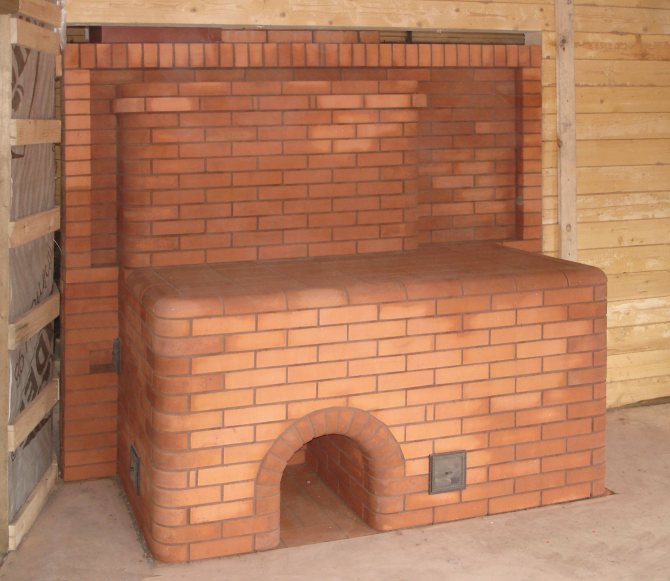

An extension can be made to the back of the stove - a stove bench
The Swedish stove has many advantages. However, they are an advantage only for a small private house, where they live all year round.
Pros:
- Compactness - the main structure without a bench takes about 1 sq. m. area and reaches a height of 2 m.
- High efficiency - a furnace unit of this size heats up to 30 sq. m, provided that it is installed on the border of 2 rooms. Although the efficiency of even a simple coal boiler is higher.
- Functionality - the oven heats the house, you can cook and even bake bread in it. Clothes and shoes are dried in the upper niche. If a bed is attached, you can sleep on the stove. Arrangement of a fireplace on the side facing the living room is allowed.
- Simple masonry - installation does not require high qualifications. However, the order should be done very carefully and precisely according to the scheme.
- Any fuel - you can use coal, wood, pellets, peat. But the amount of heat generated by the stove depends on the type of fuel.
- Efficiency - in order to maintain an optimal regime in the country, it is enough to heat the Swede twice a day.
- The unit provides quick warm-up - in 3-4 minutes.
- The heat exchanger is a combination of vertical channels. They retain less soot and dust and do not need frequent cleaning.
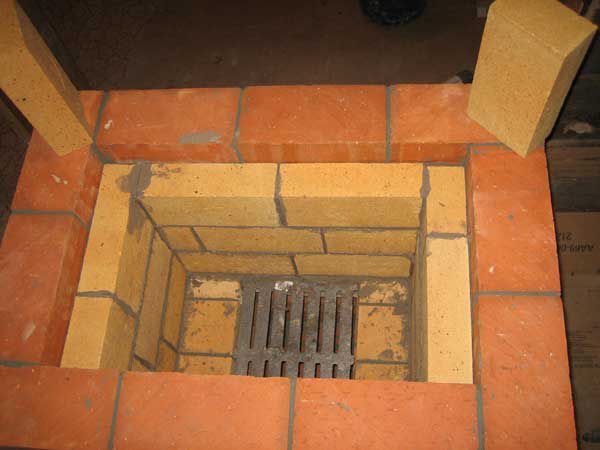

Due to the small firebox, you cannot immediately lay a large amount of firewood
The disadvantages of the Swede are also due to its design:
- The height of the fuel chamber is low. In addition, its upper part is a cast iron hob, which gives off heat much faster than a brick wall. The loss of heat leads to strong cooling of the combustion zone. Fuel burns worse, not completely, so more coal or wood is required to obtain a certain amount of heat.
- The firebox door and hob are weak elements. The door is allowed to be installed only from cast iron, since the stamped sheet quickly burns out. For the same reason, the hob must be changed frequently.
- Masonry is carried out only on fireclay clay, bricks - red clay and fireclay.
- After a long downtime, the Swede is melted in several runs, since the brick walls absorb a lot of moisture. This option is not suitable for a summer cottage where they live on short trips in winter. It takes too long to prepare the stove for constant heating.
The Swedish stove can be turned into a real decoration.For cladding, tiles, ceramics, decorative stone are used, provided that its thermal conductivity indicators coincide with the parameters of the brick.
The design of the stove-stove: features, principle of operation, arrangement of heat exchangers
A potbelly stove with a water circuit works as follows:
- Firewood is loaded into the firebox.
- Fire is kindled, heat is transferred directly to the water tank or to the recuperator coil.
- Hot water is supplied to the heating or water supply system.
- Residual heat and combustible gases are removed from the room through the chimney.
- Ashes fall through the grate into the ash pan.
In the design of the unit with a water circuit, two principles of energy collection are used:
- Direct collection of heat energy. The heat exchanger circuit is located inside the stove. Heat transfer begins immediately from the contact of the open flame and the boiler tubes. The water in the radiator boils and flows into the heating system. From there, it is sent to the water supply pipes. The heat exchanger experiences large temperature differences (contrast between the temperature of the water and the heat inside the oven).
- Collection of secondary radiation from the heater. The boiler circuit is located outside the heater. Being outside, it collects the secondary thermal radiation from the heated metal surface. The degree of heating of the heat exchanger is lower than in the previous case, the temperature differences are not so significant. The water in the circuit of the device begins to heat up after the stove warms up.
Photo gallery: common types of heat exchangers
Mineral salts are formed inside the boiler. Therefore, instead of water, it is more advisable to use antifreeze or antifreeze, which contain additives that prevent the formation of mineral deposits. The most common heat exchanger designs:
- a water tank built into the stove - a capacitive boiler;
- a pipe boiler - a tank in the form of a water jacket around a stove or chimney - a capacitive heat exchanger;
- main boilers are a coil spiral or a water conduit passing in the active zone of heat transfer.
Calculation of the main parameters of a potbelly stove with a water circuit
To calculate the dimensions of a stove with a water circuit, a drawing, drawing or sketch of the future device is required. This will help avoid manufacturing errors.
Having chosen a suitable project, we determine the parameters: length, height, width. We consider the dimensions of the combustion chamber, the length and diameter of the pipe, and the height above the floor. The potbelly stove is characterized by high temperatures inside the boiler, therefore, metal with a thickness of more than 3 mm should be used. Or to carry out scheduled repairs every 2-3 years.
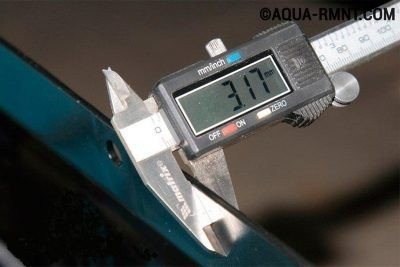

Thick-walled alloy metal is used in the manufacture of potbelly stoves.
Installing the stove in the bath
Since the correct steam room is always built of wood, the main requirement when installing a wood-burning heater is fire safety. To withstand it, follow these simple rules:
- the stove cannot be placed directly on a wooden floor, but only on an iron sheet protruding 70 cm in front of the firebox;
- wall cladding made of combustible materials must also be protected from fire with sheets of roofing iron or minerite;
- when installing a heater with the removal of the firebox, the opening in the wooden partition is also sheathed with non-combustible materials, as is done in the photo;
- the distance from the insulated chimney to the wooden building structures is 38 cm.
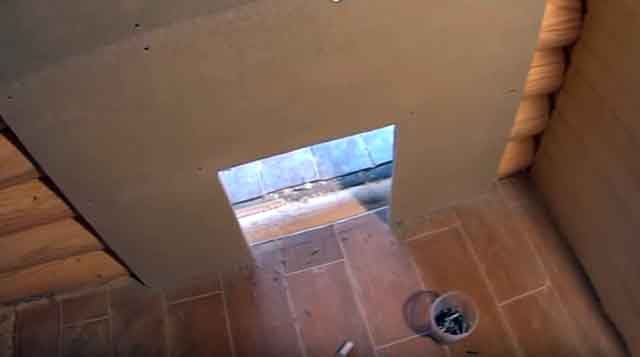

It is recommended to make a channel for the removal of combustion products to the street from a double-walled sandwich filled with basalt wool. Often, the same square-shaped water tank is used to isolate the chimney, built directly into the ceiling. How the stove is installed correctly in the bath is shown in the diagram:
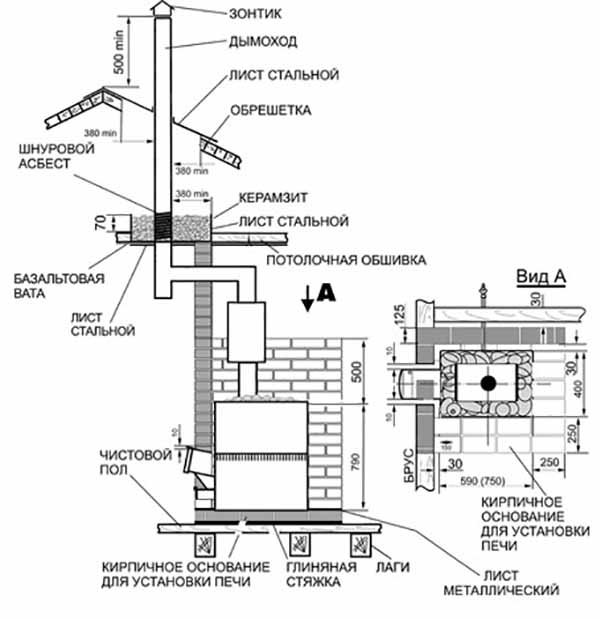

Installation and connection
When installing the furnace, you must strictly follow the fire safety rules:
- The distance to walls and surrounding objects must be at least 800 mm. Walls can also be covered with ceramic tiles.
- All parts of the chimney must be tightly connected.
- The room must be equipped with a supply and exhaust ventilation system.
The chimney is installed as follows:
- We fix the first section of the pipe over the chimney opening.
- We build up the pipe bends to the level of the overlap.
- In the overlap we make holes with a diameter of 170 mm. Remove the layer of thermal insulation around the hole in order to exclude fire.
- First, we mount the through glass, then insert the pipe into it.
- Next, we connect the pipes to the external chimney.
- We apply bitumen to the pipe and insulate it.
If you need to heat a large area, you can connect the stove to the heating shield. This will increase the flow of heat and allow it to be stored longer.
Varieties of ovens
The unit must warm up the entire steam room with high quality, but at the same time not interfere and not pose a danger to visitors
It is worth paying attention to the design of the oven that you plan to install in the steam room. If you classify products by the location of the fuel door, then the following options can be distinguished:
- the firebox door opens directly from the steam room. This is the most common option. Firewood is loaded from the steam room. It is very convenient to regulate the draft by opening the door slightly. If the door is equipped with tempered glass, then the opportunity to admire the flames while soaring is added. However, it is worth remembering that when loading firewood, dirt remains on the floor, and oxygen in a small room is burned out too quickly;
- the firebox door opens into the dressing room or the rest room. Fuel is being loaded from the same room. This option is considered the best and safer, because oxygen in the steam room is not burned out by the flame, it is easier to maintain cleanliness, space in the steam room is saved, and it is not necessary to install a separate heating system in the rest room. If, during the construction of the walls, a technological hole for an elongated (remote) fuel channel was not provided in advance, then you will have to partially break the partition;
- the firebox door faces the street. Perhaps an acceptable option only for the smallest or seasonal baths. Loading and reloading fuel, traction control will have to be carried out, constantly running out into the street, which will cause discomfort.
The furnaces themselves, by their design, can be vertical, horizontal, in the form of a barrel and other shapes. A stone net and a hot water tank may be present. Chimneys from metal stoves are led out through the ceiling or wall.
Metal wood stoves for a bath
Fuels and stove types
The stove in the bath is divided into 2 main groups, these are: metal (cast iron) and brick options. Brick sauna stoves are heat-consuming, they heat up longer, but also cool down for a long time. The iron stove is an economy type heating item, due to the multitasking, simplicity and convenience of the equipment. When choosing a stove or fireplace, it is necessary to look not only at the design of the heat source, but also at the type of fuel. Different fuels, when burned with the same mass, will emit different amounts of heat. There are many variations of the energy carrier.
According to the aggregate presence and type of fuel, all fuel groups are divided into solid, liquid and gaseous fuels. Solid is a common class of fuel, it includes: coal, peat, briquettes, firewood, pallets. They are used only in ordinary ovens as they burn out rapidly. Liquid type of fuel is kerosene, fuel oil, diesel, boiler room, coke-chemical liquid.
They have a significant heating value. The first type of gaseous fuel is natural gas, obtained from gas deposits, or associated gas from the extraction of naphtha. It has a good calorific value.


